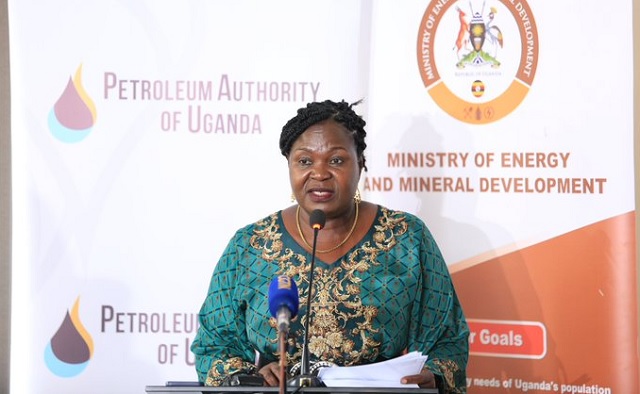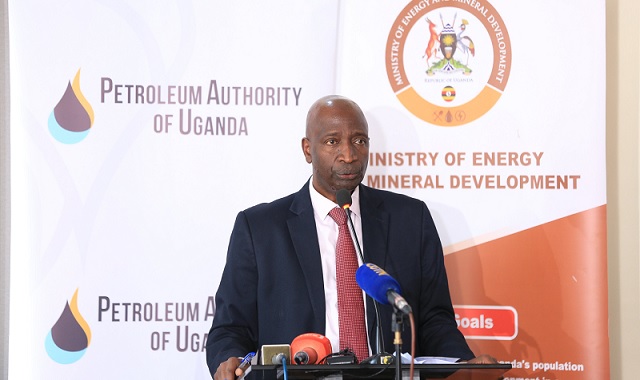
Kampala, Uganda | THE INDEPENDENT | The Final Investment Decision for Uganda’s Oil and Gas refinery project is set for June, this is according to the Ministry of Energy and Mineral Development.
The refinery was one of the three projects mooted more than a decade ago, but little has been said about it since the East African Crude Oil Pipeline project route was decided on in 2016.
This caused concern as to whether the government had been influenced by the oil companies to abandon the refinery in preference for the export pipeline.
The Minister for Energy and Mineral Development, Ruth Nankabirwa said that the Final Investment Decision for the refinery will be made by June this year so that the project is ready by the 2025 oil production deadline.
She said that currently, environmental and social impact assessments are ongoing, courtesy of the Albertine Graben Refinery Consortium which won the contract for the refinery.
The Uganda Refinery Holding Company Limited (URHC), a subsidiary of Uganda National Oil Company Limited (UNOC), will hold Uganda’s commercial interests on behalf of the Government of Uganda participating with up to 40% shares, according to initial plans.
The government also proposed that the East African Community countries take shares in the project, alongside the oil companies, Total Energies, and Cnooc.
The Albertine Graben Energy Consortium (AGEC) submitted the Refinery Project’s Front End Engineering Design (FEED) to the Government in August 2021, and PAU accordingly approved it in July 2022.
The refinery project also has the component for the development of a refined petroleum products pipeline to evacuate refined oil products from the refinery in Hoima to a storage and distribution terminal at Namwabula in Mpigi District.
At least 72 percent of the 4,270 project-affected persons have signed memoranda of understanding for compensation, and payment of compensation stands at about 41 percent, according to Nankabirwa.
She said that currently, there are negotiations going on between oil and gas companies and the refinery consortium to reach an agreement that they will supply the crude to the refinery.
The project is expected to cost 4 billion dollars, but the Petroleum Authority of Uganda, PAU says the final figure should be clear after the announcement of the FID.
PAU Executive Director, Ernest Rubondo said the country should expect a lot of activity when the FID for the refinery is done including hiring, contract offers, and construction works. The refinery at the Hoima Industrial Park covers 5 square kilometers and will have the capacity to refine up to 60,000 dollars per day, according to Rubondo.

The consortium charged with the refinery construction will have to work within the timelines already provided by the FID for the Tilenga and Kingfisher, the crude production projects being handled by TotalEnergies and Cnooc Uganda Ltd respectively.
Next week, Cnooc is expected to officially begin drilling its wells at an event to be presided over by President Yoweri Museveni.
With Kingfisher expected to produce 40,000 barrels of oil per day, it means all the crude produced there could be fed into the refinery and the rest, 20,000 delivered by TotalEnergies from Tilenga area.
This is also part of the negotiations that are going on to ensure that the two companies, the refinery consortium, and the government agree on the supply details, according to the ministry.
Nankabirwa said the two projects will be developed at the same time and that the two production sites will complement each to ensure continuity.
Rubondo also said the refinery is designed in such a way that should there be changes in the priorities for the country, it can be reconfigured to meet the demands of the time.
The design was approved by PAU at the end of last year, and Rubondo says that they are proceeding with that for now.
Rubondo explained that the Industrial Park in Kabaale Hoima is being prepared for Petrochemicals and therefore the refinery will have to cater to the petrochemical industry feedstock.
“So as the preparation of the refinery happens, the country will also be assessing its petrochemical needs. And so they can say let’s reduce on the production of petrol the refinery is producing if it is going to give us an opportunity to increase on production of plastics which were importing,” explained Rubondo.
On whether the cost of the refinery is likely to go up, Rubondo said the current estimate is about $ 4 billion.
“But the specific numbers will be announced when the FID is announced. The number announced at FIDs will be more specific. For now, we are working with a figure of about four billion dollars,” said Rubondo.
Uganda National Oil Company’s Chief Commercial Officer, Gilbert Kamuntu said part of the design of the refinery was to manage Uganda’s crude oil.
“As you know our crude oil is waxy. High in wax which is actually good for certain kinds of refineries. So the current refinery is designed to process that kind of feedstock,” revealed Kamuntu
The #EACOP project has undergone several 3rd party audits and I’m pleased to inform you that all the audits have achieved success. We expect to achieve the financing of the project this year. Says @GilbertKamuntu – Chief Financial Officer @UNOC_UG pic.twitter.com/66o0zb7MWn
— PAU_Uganda (@PAU_Uganda) January 20, 2023
According to Kamuntu, the only change is expected in what is known as value engineering optimization.
“As we get closer to FID, or as we get closer to construction, there may be value engineering. And the objective of that is to increase the cost or maximize value. But in terms of the fundamental design, we believe that will remain fairly stable,” he said.
Key in the conditions for investors to reach an FID is the need for the government to start work on product pipelines, and secure land in Kabale where the refinery will be located.
So far, Nankabirwa confirmed that the government has secured the corridor for associated infrastructure like the way 213-kilometer refined products pipeline from Hoima to Namwabula-Mpigi.
“At least 72per cent of the 4,270 project-affected persons have signed for compensation, and payment of compensation stands at about 41per cent,” Nankabirwa revealed
****
URN
 The Independent Uganda: You get the Truth we Pay the Price
The Independent Uganda: You get the Truth we Pay the Price



